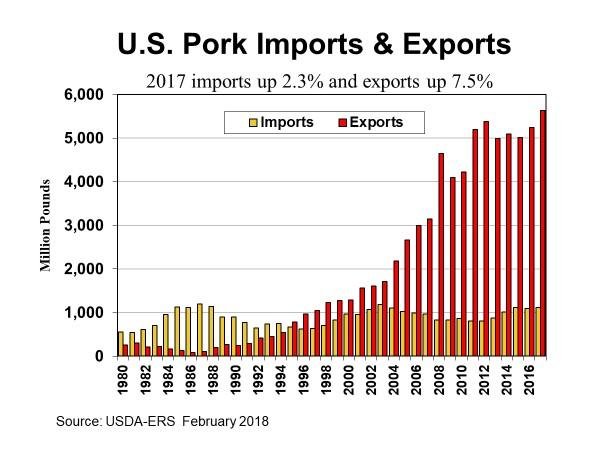Malaysia emerges as an unconventional but increasingly promising destination for U.S. pork suppliers seeking new market footholds outside the established conventions of global swine trade. Shadows lengthen and contracts unfold, yet beneath these commercial formalities, the robust demand for imported pork ripples through Malaysia’s dynamic food sector—a scene not always in full view from boardroom windows.
Among Southeast Asian economies, Malaysia presents a tapestry of unique factors shaping protein imports. Its diverse population spans culinary traditions where pork features significantly in non-halal supply chains—especially within ethnic Chinese and select indigenous communities. Notably, even while majority Muslim demographics render segments of the market inaccessible, estimated annual per capita consumption remains steady among relevant consumer blocs—hovering just north of 9 kilograms according to government-compiled statistics.
Back in 2021, pig production within Malaysia hovered at around 483,300 heads; projections forecast an inconspicuous decline by about 0.1% per annum through 2026. Curiously enough, within roughly this same period experts anticipate total demand increasing—albeit only slightly—by approximately 0.2% per year. The paradox here is striking: shrinking output coinciding with imperceptibly rising appetite.
Turning to international procurement pathways, European exporters like Spain and Denmark have traditionally dominated the charts for fresh or frozen pork shipped into Malaysian ports. Danish product lines underwent brisk acceleration over recent years—a CAGR outstripping that clocked by most rivals—with Spanish shipments shadowing closely behind in terms of metric tonnage and aggregate value.
Despite their formidable shareholdings on import manifests (and centuries-old continental links dating back to colonial influence), American exporters are carving out greater real estate within this lucrative segment every passing season. According to data updated through May 2025, U.S.-origin pork maintained significant presence alongside these European incumbents—placing it firmly among Malaysia’s three largest non-domestic sources by value as recently as last trading cycle.
A crucial aspect driving further optimism comes from subtle price mechanics not always apparent amid headline statistics alone. For instance: average landed prices for imported swine meat reached $3,157 per metric ton during calendar year 2024—a modest increase compared with prior intervals but substantially below spike levels observed elsewhere post-pandemic disruptions. When you consider shifting exchange rate landscapes alongside urbanization-linked dietary changes across Malaysian cities like Ipoh or Penang—not strictly Kuala Lumpur—the stage seems set for deeper U.S. integration without fearsome cost volatility.
Yet processes are rarely linear here; minor discontinuities form part of any serious engagement strategy targeting local buyers or food processors who often privilege quality assurance schemes distinct from those emphasized back home in Texas or Iowa packing plants.
Sometimes when discussing prospects for expansion into Malaysia’s cold chain retail networks—a crucible where logistics meets gastronomy—it makes sense to glance sideways at secondary players too: Canada booked nearly $12 million in swine exports to Malaysia during 2023 alone (down sharply from previous highs), underscoring how fortunes can see a swift decline based on changing trade relationships even before pandemic echoes fade fully into history’s footnotes. Knowing this volatility exists should encourage U.S. firms toward nimble partnership models rather than exclusively high-volume approaches originally mapped out before shifting border protocols intervened.
With all these factors swirling together—not unlike flavors mingling unexpectedly inside a claypot dish over flames—it would be rash (if slightly tempting) to suggest any single narrative line emerging above others with perfect clarity just yet.
On another note entirely: discussions around halal-versus-non-halal supply chains sometimes overshadow more technical regulatory transitions underway regarding veterinary exclusions or phosphate residue standards enforceable both at origin certification points stateside and downstream Malaysian customs operations alike.
One less explored but telling idiom applies well here: “Asking a blindfolded wayang performer about his line cues.” Expertise counts—but so does adapting quickly when conditions aren’t as expected on arrival.
For American producers pursuing fresher sales agreements—or freezing surplus muscle cuts destined ultimately for restaurant operators experimenting beyond their usual menus—the future holds space both expansive and unpredictable.
Occasionally regulatory revisions will ripple upstream abruptly; sometimes they wash downstream unnoticed until one shipment clears seamlessly while another stutters behind red tape woven overnight.
After exploring new markets such as those fostered regionally along Johor state borders where Singaporean cross-border investments quietly shape preferences inside hypermarkets daily—even seasoned traders exhibit fleeting uncertainty regarding which port terminal next month’s bulk container will actually dock first.
Even so: momentum builds cumulatively when familiar economic drivers subtly shift orientation due weightier forces only partly visible at surface level—the planetary drift underlying tectonic movements long predicted yet oddly unsynchronized between continents till quite recently.
In sum—you wouldn’t necessarily bet your whole farm immediately—but smart stakeholders can detect opportunity riding shotgun beside fluctuation if they avoid treating every soft signal like flat noise interrupted by perfect calibration between producer intent and local palate evolution across today’s ever-changing marketplace boundaries in Southeast Asia’s teeming corridors.


